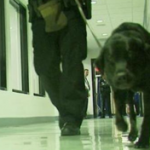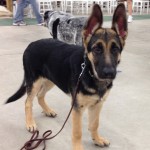

There appears to be lots of anxiety to ease among air travelers according to this article that reported that 90 percent of passengers surveyed reported travel more difficult this year than last. The story was published by WCTV in Tallahassee.


There appears to be lots of anxiety to ease among air travelers according to this article that reported that 90 percent of passengers surveyed reported travel more difficult this year than last. The story was published by WCTV in Tallahassee.
No need for sheep in this herding game. It’s also something like canine soccer. The formal name for the game is Treibbell – or ball herding. Dogs need to push balls toward a goal in a timed exercise. The balls vary in size depending on the size of the dog from teacups to vary large dogs.
The sport is a low impact alternative to agility. In this case the dogs gets exercise without the climbing and jumping. The handlers remain in place.
The sport began in Germany and is taking hold in the United States. One of the governing associations for the sport is the American Treibball Association. Here is a ‘how to’ video.
Here’s a new illustration of that assignment. The exercise does meet the training objectives with the dog — pay attention, comply, stay on task and have fun in the process. It is another illustration how teaching the dogs tricks can actually advance one’s training goals. Ruben (left) and Bones showing off in our 2013 holiday program and also showing attention and focus on the assignment they’ve been given — walk with me on my shoes.
When your dog gets ‘in trouble’ at home, it is often because the dog doesn’t have enough real work to do and is trying to keep herself/himself occupied. One can curb lots of this ‘nuisance’ behavior by giving your dog a job to do. In this example, Ace is assigned the task of finding his toy among the presents — putting his super sense of smell to work. Use the ‘Contact Us’ tab to ask us for other tips about keeping your dog engaged.
The core of having your dog come to you when you call is to help your dog feel as if he wants to come. Initially, you should make the ‘come’ exercise a game the dog enjoys. While you teaching that, you must never call you dog and correct him or her for something because you are always correcting the dog for coming. We spend lots of time in our beginning classes on strategies that help your dog choose to come to you with enthusiasm.
To help your dog learn to pay attention to you and do as you want him or her to do, give your dog the opportunity to make choices early in training.
Use a loose lead — no pressure on the collar. The picture at the left shows Charlie sitting with a loose lead. He could get up if he wanted to, but the handler wants to teach him to remain in place until the handler releases him or gives him other instructions. This builds the dog’s time-on-task behavior.
Alternatively, when the leash is tight, and you are holding the dog in place, you are not putting the responsibility on the dog for ‘correct’ behavior. Of course, if/when the dog gets up during this exercise, you will need to correct her/him immediately, and then praise him/her when the dog sits again.
Teaching your dog tricks engages their mind. One can accomplish a lot of training objectives through games and other tasks. In the process, you’ll have lots of fun, too. The foundation is helping the dog learn to pay attention, do as you say, and stay on task. Tricks help the dog focus on you and what you want. At the left, Rusty delivers a dog treat from the vending machine when he presses the handle.


There are several dog training activities to reduce the probably of dog bites around the dog bowl. It’s easy to understand how a dog can become possessive of the food bowl. We will help you reduce that feeling and in the process reduce the probably of a bite as the dog defends the bowl. Among the activities: Teach your dog to take food from your hands at the bowl. Pet the dog while he/she is eating. Avoid feeding the dog in isolation.